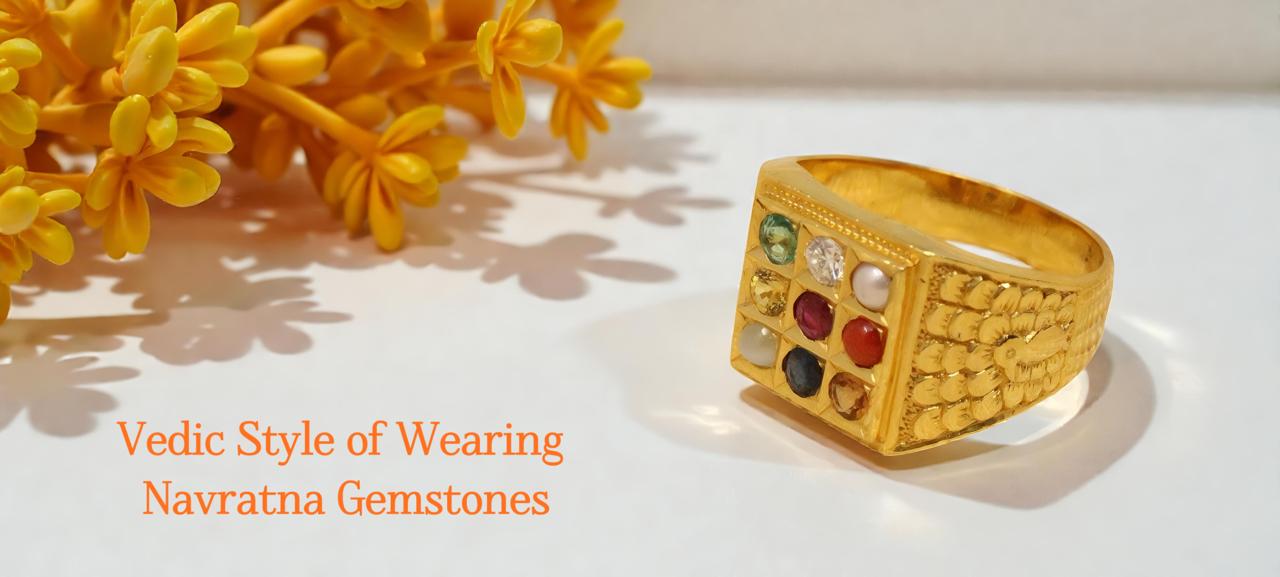 Categories
Categories 
Blue Sapphires have set a benchmark against which other blue stones are measured. It's breathtaking deep blue and vibrance have caught hearts for millennia. Considered one of the "big three" precious gemstones, sapphires have reached many fans beyond September birthdays and 45th anniversaries. And for decades, it has held so many in thrall. The color blue immediately emerge to mind when thinking of a gorgeous sapphire gemstone. This vintage gem, blue sapphire continues to serve as a symbol of love, power, and insight.

Choosing a variety of blue sapphire stone is the next step after deciding to purchase one. Every single stone is unique. The term "The 4 Cs" refers to the four most important characteristics to consider while selecting a blue sapphire:
Color: For a perfect blue sapphire, the first question that arises is, "What shade of blue should I get?" The primary factor in determining a sapphire's worth is its rich color. Strong velvety blue to violet blue in medium tones is the most sought-after and valued color. These impressive sapphires can range from a very light blue to a very dark blue. Whether you like a light or dark blue crystal depends on your own preferences. Saturation is the intensity of a color. It is the most important aspect of value. In general, the greater the saturation of sapphire stone, the more valuable it is.

Clarity: Inclusions are natural characteristics of sapphires. There is a likelihood that sapphires with no inclusions are synthetic. Find a sapphire that doesn't have any flaws that can be seen by the naked eye. Professionals consider the size, placement, and quantity of inclusions to determine clarity. The rating improves if the inclusions are not detected.

Cut: The cut of a sapphire is crucial to making it spark. A stone's cut defines how it was facetted and polished after being mined. Symmetry, windowing, extinction, and brilliance are all taken into consideration while determining a sapphire's cut grade.

Carat: The weight in carats of a sapphire determines its value. Typically, larger, gem-quality stones have a higher price tag because they are so rare. The weight-based pricing structure will be color-specific.
Learn more:- What do you know about Blue Sapphire Stone
Because sapphires are dichroic, their color shifts depending on the viewer's position. Most blue sapphires look deep blue to violet-blue when viewed from one direction and slightly greenish blue when viewed from another.
When cutting a stone, a proficient cutter will face the stone in the direction that will allow the maximum amount of the desired blue to violet blue to show through. The lightest blue sapphires, known as "baby blues," are particularly vulnerable to having inclusions show up if not cut properly.
As per trends, blue sapphires are available in vintage-inspired shapes and cuts, particularly oval, pear, and emerald. The vividness of a sapphire's hue is perfectly brought out by these cuts. These universally flattering shapes draw all attention.
If you want to know more about Cornflower Blue Sapphire, head over to :- Cornflower Blue Sapphire
Eye-clean, or completely inclusion-free, blue sapphires are extremely rare, especially when we consider bigger sizes. If the inclusions do not diminish the stone's vividness and color, or otherwise do not diminish its beauty, a sapphire with inclusions can still be considered highly appreciable.
Blue sapphires are accepted to have silk inclusions, but only if they are not too many to affect the stone's color or brightness. In fact, a stone's value might rise if it has silk inclusions that make it look velvety, like the highly sought-after Kashmir sapphires.
Expand your knowledge through checking:- Neelam Stone Price
Large blue sapphires (weighing one carat or more) are shaped into uniform shapes and sizes. Instead, each stone is cut to extract as much value as possible from the uncut crystal. Because of this, it's challenging to find pairs in larger sizes.
For additional information on Royal Blue Sapphires, click on the text beside:- Royal Blue Sapphire
Everyday jewelry should be cleaned with sapphire, no matter how durable they are. The reason is its precious metal setting. This metal is vulnerable to corrosion from chemicals and scratches from the environment. Don't risk losing your precious jewelry by wearing it to the beach or pool.
To uncover more details about Kashmir Blue Sapphires, simply click on the adjacent text:- Kashmir Blue Sapphire
Use a soft brush and some mild dish soap to clean the dust from behind the stone of your sapphire jewelry. It is also safe to clean sapphire jewelry with an ultrasonic cleaner.

It is important to do your research on sapphires before you buy one. A gem identification report or laboratory analysis would be significant here. It requires a gemologist to inspect each stone and verify the legitimacy of the report to give you peace of mind. It describes the quality of your sapphire. When you make a purchase from Navratan, we'll have a gem report ready in the package containing your stone. Just let us know if you need details with a lab result, and we'll be happy to provide them. We believe the more informed you are about a purchase, the more satisfied you will be with it.
Finally, a simple piece of advice when looking for a blue sapphire is to ask questions. Seek knowledge from our team of experts, who are readily available to share our gemstone knowledge with you. If you have any questions about blue sapphires in particular, our trained gemologists are here to assist.
Start your search for the perfect blue sapphire on our user-friendly site now. If you're looking for the highest-quality sapphire jewelry or loose sapphires, look no further than Navratan.com.




Are Light or Dark Emeralds Better? Here’s the Surprising Winner
December 24th, 2025